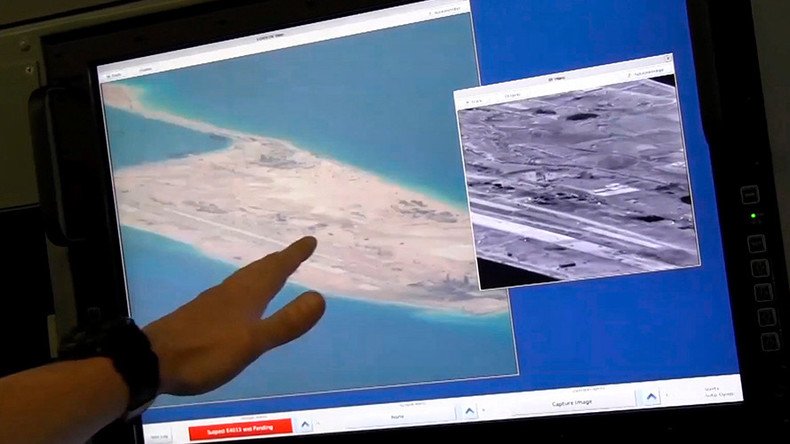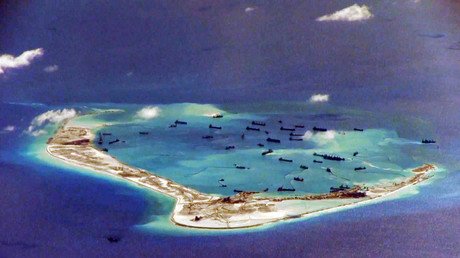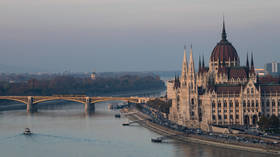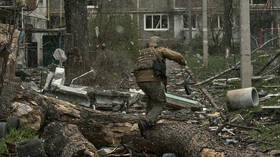Beijing says bolstering S. China Sea defense same as US presence in Hawaii

Chinese Foreign Ministry has argued that its strengthening defenses on South China Sea islands is similar to the US deployments in Hawaii, telling Washington to stay away from the territorial dispute.
“There is no difference between China's deployment of necessary national defense facilities on its own territory and the defense installation by the US in Hawaii,” Foreign Ministry’s spokeswoman Hua Chunying told journalists at a regular press briefing on Monday.
The US hurried to refute the Chinese claims, with White House press secretary Josh Earnest saying that the comparisons drawn by Beijing were inaccurate.
"There is no other country that has a claim on Hawaii. But yet when you consider the land features in the South China Sea, there are a variety of overlapping territorial claims that a variety of countries have made on those features," Earnest said.
Last week, Washington slammed China’s activities on disputed Spratly Islands (known as Nansha Qundao in Chinese) in the South China Sea. Secretary of State John Kerry spoke of China’s “militarization” of the archipelago promising “very serious conversations” with Beijing, Washington Post reported.
Beijing builds radar in the Spratly islands of disputed South China Sea: US think tank https://t.co/2Wj3wM2RLhpic.twitter.com/FV1sLlmhKn
— AFP news agency (@AFP) February 23, 2016
Another Piece of the Puzzle #China builds new #radar facilities in the #Spratlys
— AMTI (@AsiaMTI) February 22, 2016
Read More: https://t.co/7W6e7YijDtpic.twitter.com/NsUTWy6cCo
On Monday, a Washington-based think tank, the Asian Maritime Transparency Initiative, claimed recent satellite images of a newly built Cuarteron Reef – lying roughly in the middle of the South China Sea – indicate that China sets up “high-power radars,” “buried bunkers” and communications equipment.
“The US is not a party concerned in the South China Sea dispute. The issue of the South China Sea is not and should not become an issue between China and the US,” Hua said.
“Islands in the South China Sea have been part of China since ancient times. The Chinese side is entitled to safeguard its territorial sovereignty and maritime rights and interests.”
Beijing, she added, is constructing artificial islands and reefs in the area “mainly for civilian purposes” but stressed China sees bolstering defense of the Spratlys as safeguarding own security and sovereignty.
“China's deployment of limited defense facilities on its own territory is its exercise of self-defense right to which a sovereign state is entitled under international law. It has nothing to do with militarization.”
In the meantime, Hawaii accommodates multiple US military installations, most notably Pearl Harbor naval port and several Marine Corps bases.
US warships and planes have long been conducting close-up surveillance against countries in the region, Hua stressed, citing the increasing frequency of such moves.
The US is stepping up cooperation with its Asian allies to counter what Washington perceives as the rise of China’s naval capabilities to control shipping lanes in the region and beyond.
Washington’s military measures included regular naval patrols in the South China Sea as well as air surveillance and the US-led war games.
Previously, both Chinese and US militaries had close encounters at sea and in the air, triggering diplomatic turmoil.
The Spratly Islands consist of more than 750 reefs, atolls and tiny islands, lying off the coastlines of Vietnam, the Philippines, Taiwan, Malaysia, Brunei and China. All claimants have their national names for the islands which are at the heart of economically important shipping routes in the South China Sea.
The archipelago also offers rich fishing grounds, along with possible oil and natural gas deposits, which explain the territorial claims by neighboring countries.














